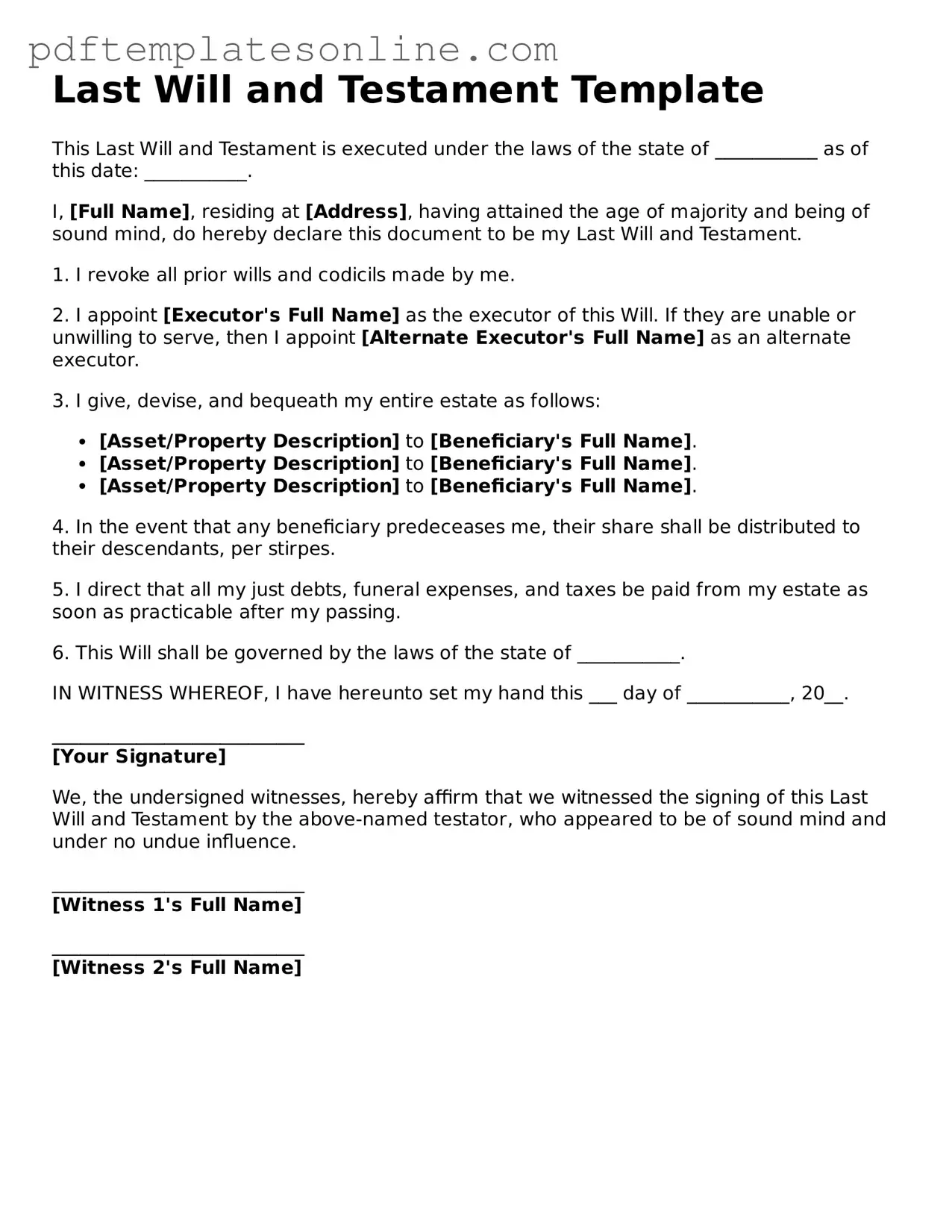Filling out a Last Will and Testament form is an important task that ensures your wishes are honored after your passing. However, many individuals make mistakes that can lead to complications. One common error is failing to properly identify the beneficiaries. It's essential to provide full names and, if possible, addresses to avoid any confusion later.
Another mistake is not updating the will after major life events. Changes such as marriage, divorce, or the birth of a child can significantly impact your wishes. Neglecting to revise the document can result in unintended distributions of your assets.
Some people overlook the requirement for witnesses. Most states require at least two witnesses to sign the will. If this step is skipped, the will may be deemed invalid, leading to potential disputes among heirs.
Additionally, individuals sometimes forget to date the document. A missing date can create ambiguity about the will's validity, especially if multiple versions exist. Always ensure the date is clearly marked to establish the most current intentions.
Another common oversight is using unclear language. Ambiguities can lead to misinterpretations and conflicts among beneficiaries. It's crucial to be as specific as possible regarding asset distribution to minimize confusion.
People may also fail to consider the executor's role. Choosing someone who is not trustworthy or who lacks the ability to manage the estate can create issues. Selecting a responsible executor is vital for ensuring your wishes are carried out effectively.
Lastly, neglecting to store the will in a safe yet accessible location can be detrimental. If the will cannot be found after your passing, your assets may be distributed according to state laws rather than your wishes. Ensure that your loved ones know where to locate the document when needed.
